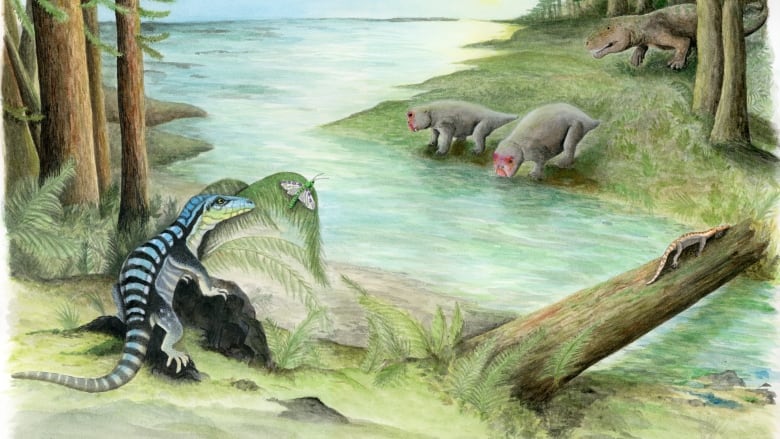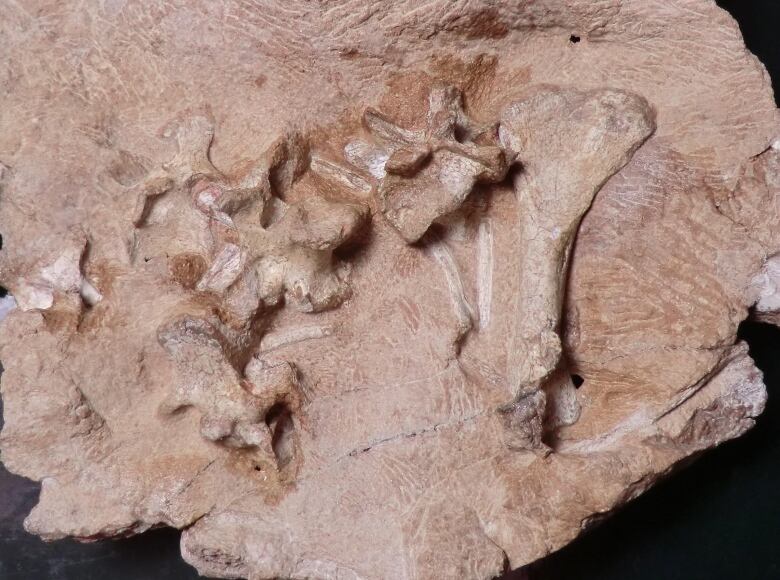Iguana-sized cousin to the dinosaurs discovered in Antarctica
Antarctanax shackletoni was a carnivore that ate bugs and small mammals

Imagine you're walking through a lush forest, trees stretching into the sky, scrub bushes dotting the landscape with the soft sound of a stream gurgling nearby.
This is Antarctica.
It's not the Antarctica we know today, but the one that existed 250 million years ago. Now, researchers have discovered an iguana-sized dinosaur cousin that once roamed the lush forested area.
Meet Antarctanax shackletoni,an archosaur, an early relative of dinosaurs andcrocodiles. Based on their fossil findings, researchers believe Antarctanaxwas alizard-sized carnivore that ate bugs, early mammals and amphibians.

While other archosaurs have been found, lead author of the paper published in the Journal of Vertebrate Paleontology Brandon Peecook said that Antarctanax is particularly special.
Roughly two million years before the appearance of Antarctanax, Earth underwent its greatest mass extinction event. More than 90 per cent of all animal life was wiped out.
There is little evidence to suggest many archosaurs existed before the mass extinction, during the geologicaltime period known as the Permian. However, in the followingperiod the early Triassic they thrived.
"They're really hard to find in the Permian[period]. We really have a poor record of them," said Peecook. "That's probably because they weren't that common."
Afterthe extinction, he said the creatures were found in: Australia, Antarctica, South America, Africa, Europe andChina. "Everywhere there's early Triassic rock, they're there. In abundance."
This new discovery as well as some earlier fossils found is teaching paleontologists that Antarctica was home to some very unique life.
Roughly 300 million years ago, there was just one supercontinent on Earth, called Pangea. About 200 million years ago, it began to break apart.
Scientists had once thought that because life evolved and thrived on this supercontinent that the fossil records would show the same animals right around the globe. But that's not quite the case.
"The prevailing thought in the literature was what you found in Antarctica is a subset of what you'd find elsewhere because everything was connected," said Peecook. "But the more work we've done there's a lot of very unique life forms in Antarctica."
Antarctic paleontology
It's not exactly typical to think of paleontology being done in what people often think of as a frozen wasteland. But fossils have been found in Antarctica going back to the 1970s.
So where exactly does onelook for fossils in a region known for bitter cold and snow?
"There are only two places: on the coast of the continent there are islands, and the rocks there are 60 million years old or younger," said Peecook. "The only other place is up in the very middle where there is this mountain range, the Transantarctic Mountains that just pop above the ice in intervals just like jagged peaks going down in a line."

So in December 2010 and January 2011 summer in the southern hemisphere Peecook and his team ventured to the region to do some digging. Helicopters had to take them to different locations. The weather wasn't too bad, he said, with temperatures reaching just below 0 C, though there were a couple of times the temperaturefelt like 40 C with the wind chill. Still, it was worth it, he said.
Peecook is looking forward to seeing more paleontology work undertaken by his peers in the region, or perhaps even returning himself. It's a unique area that begs to be explored, he said.
"It's a little more exciting than you might have expected."












_(720p).jpg)


 OFFICIAL HD MUSIC VIDEO.jpg)
.jpg)



























































































